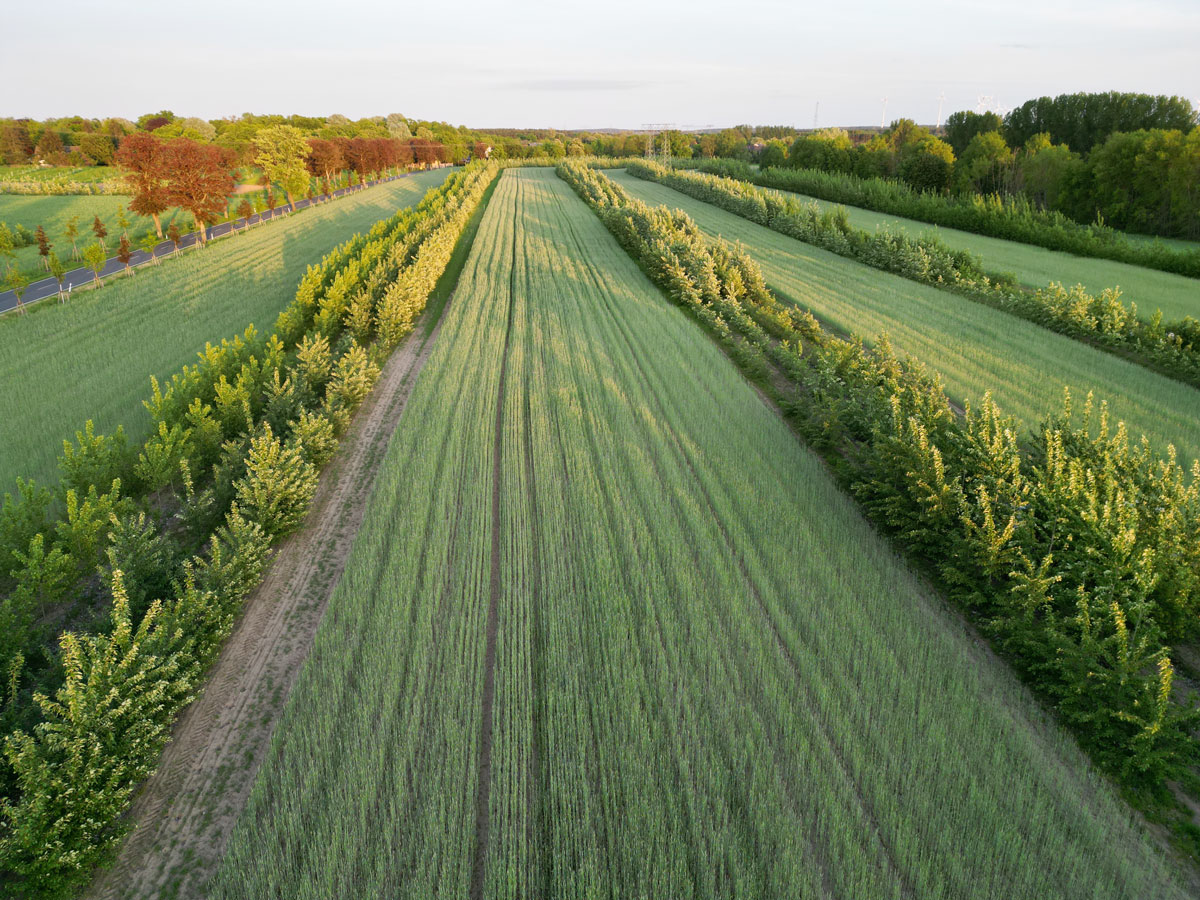PappelWERT:
Poplar cultivation in agroforestry systems and value chains based thereon in agriculture and the wood industry
With this project, we would like to demonstrate how agroforestry systems with fast-growing poplars can enable sustainable agriculture whilst simultaneously strengthening the wood industry. In collaboration with research and practice partners, we are establishing model regions in Northern Germany and developing innovative value chains for poplar wood – in particular for material use. The focus of the Fraunhofer WKI thereby lies on the development of wood-based materials and hybrid material composites. Through the optimization of poplar cultivation, suitable wood qualities and assortments are to be achieved. In order to facilitate the entry of agricultural and wood-utilizing companies into the agroforestry value chains and to ensure the purchase of wood at stable conditions, cooperation models are being developed and networks established within the project.

Agroforestry systems were already in existence 6000 years ago. Until well into the 19th century, they were still widespread in Europe. This changed with the industrialization of agriculture, the introduction of crop rotation, advances in fertilization, and agricultural policy decisions. Now, agroforestry systems are experiencing a renaissance as a climate-resilient, environmentally friendly and efficient form of land use.
Today, this can often be seen in the form of trees and shrubs being planted between arable and pasture land.
These shaws reduce the wind speed, store water and provide shade. As a result, they reduce evaporation, dehydration and soil erosion. The shaws also provide a habitat for pollinating insects. In addition, soil fertility is improved through improved closure of nutrient cycles between arable crops and woody plants as well as through humus enrichment. Modern agroforestry systems can therefore increase agricultural yields in a natural way.
Furthermore, the woody plants themselves serve as a sustainable source of raw materials. Fast-growing tree species such as poplars enable initial timber yields after only a few years. Currently, poplar wood from agroforestry systems is predominantly used for energy, i.e. directly incinerated. To maximize resource efficiency, the wood should first be utilized materially. In Germany, poplar wood is currently established in modelmaking, caravan construction and handicrafts. By developing high-performance poplar-wood products for the construction industry and other sectors, we are significantly expanding the sales market. Simultaneously, we are making the declining sectors more sustainable, as poplar wood is an ideal lightweight-construction material, is available regionally and, thanks to its rapid growth, is extremely resource-efficient.
Last modified:
 Fraunhofer Institute for Wood Research
Fraunhofer Institute for Wood Research 
